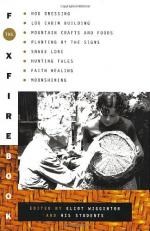|
This section contains 1,714 words (approx. 6 pages at 300 words per page) |

|
Overview
During the Middle Ages, medicine and religion were interrelated in many ways. While some have criticized the medieval church for hindering medical progress through its opposition to dissection, the Church did provide comfort and assistance for many when medical knowledge was at its lowest ebb. However, it was clear that the Church always put divine interests over the human.
Holy shrines and miracle healers have been meaningful to people in many civilizations. Never were they more important than in the Middle Ages. In Europe, especially during the eighth through eleventh centuries, the Church helped transform historical locales related to the lives (and deaths) of martyrs into sacred healing places and shrines. Special saints became patrons of healing, and miracles were performed in their names. Pilgrimages to sacred places were increasingly viewed as a way of securing divine favor. The...
|
This section contains 1,714 words (approx. 6 pages at 300 words per page) |

|


